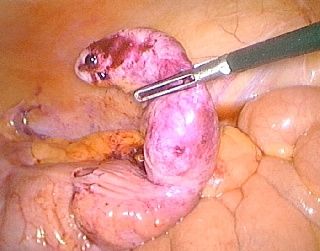Laparoscopic surgery is a minimally invasive technique that has revolutionized surgical procedures. It has changed the way we approach surgical treatment and has become the preferred method of treatment for many patients. The technology behind laparoscopic surgery has evolved over the years, and so has the curriculum for training laparoscopic surgeons. This essay will explore the need for a new curriculum to be introduced for laparoscopic surgery.
Current Curriculum:
Currently, the curriculum for laparoscopic surgery is based on a set of guidelines established by the Society of American Gastrointestinal and Endoscopic Surgeons (SAGES). The SAGES curriculum is a comprehensive program that covers all aspects of laparoscopic surgery. It consists of didactic sessions, hands-on training, and assessment of skills.
The SAGES curriculum has been successful in training laparoscopic surgeons over the years. However, the technology and techniques used in laparoscopic surgery have advanced significantly in recent years. Therefore, there is a need to update the curriculum to keep up with the latest advancements.
New Curriculum:
The new curriculum for laparoscopic surgery should focus on the latest technologies and techniques used in laparoscopic surgery. It should also be more flexible to accommodate the needs of different surgeons. The following are some of the key elements that should be included in the new curriculum:
- Virtual Reality Training:
Virtual reality training is an innovative technology that is being used in various fields, including laparoscopic surgery. It involves the use of a computer-generated environment that simulates real-life surgical procedures. Surgeons can use this technology to practice their skills without the risk of harming a patient.
The new curriculum should include virtual reality training to help surgeons become more proficient in laparoscopic surgery. It will also enable them to learn new techniques and technologies without putting a patient at risk.
- Hands-on Training:
Hands-on training is an essential component of any laparoscopic surgery curriculum. It involves the use of surgical simulators and cadavers to practice surgical procedures. The new curriculum should continue to include hands-on training, but it should also be more flexible to accommodate the needs of different surgeons.
For example, some surgeons may require more training in a particular technique or technology. The new curriculum should be able to provide customized training to meet the individual needs of each surgeon.
- Team Training:
Laparoscopic surgery is a team effort, and the new curriculum should reflect this. It should include team training sessions to help surgeons work more efficiently with their colleagues. The new curriculum should also include training on communication skills, leadership, and decision-making.
- Patient Safety:
Patient safety should be a top priority in any laparoscopic surgery curriculum. The new curriculum should include training on how to minimize the risk of complications during surgery. It should also include training on how to handle complications if they do occur.
- Continuing Education:
Laparoscopic surgery is a rapidly evolving field, and surgeons need to stay up-to-date with the latest advancements. The new curriculum should include continuing education programs to help surgeons stay abreast of the latest developments.
The new curriculum should be designed to provide a more comprehensive and flexible training program that accommodates the needs of different surgeons. It should also include virtual reality training, hands-on training, team training, patient safety, and continuing education programs.
Virtual reality training is a cutting-edge technology that can simulate real-life surgical procedures in a risk-free environment. It is an excellent tool for practicing new techniques and technologies without harming patients. Virtual reality training should be incorporated into the new curriculum to help surgeons become more proficient in laparoscopic surgery.
Hands-on training is an essential component of any laparoscopic surgery curriculum. It allows surgeons to practice surgical procedures using surgical simulators and cadavers. The new curriculum should continue to include hands-on training, but it should be more flexible to accommodate the needs of different surgeons. Customized training programs should be available to meet the individual needs of each surgeon.
Team training is also an important component of the new curriculum. Laparoscopic surgery is a team effort, and surgeons need to work efficiently with their colleagues. Team training sessions should be included in the new curriculum to help surgeons develop communication skills, leadership, and decision-making abilities.
Patient safety should be a top priority in any laparoscopic surgery curriculum. The new curriculum should include training on how to minimize the risk of complications during surgery. It should also include training on how to handle complications if they do occur. By emphasizing patient safety, the new curriculum can ensure that laparoscopic surgery remains a safe and effective method of treatment for many patients.
Finally, continuing education programs should be included in the new curriculum. Laparoscopic surgery is a rapidly evolving field, and surgeons need to stay up-to-date with the latest advancements. Continuing education programs can help surgeons stay abreast of the latest developments, ensuring that they can provide the best possible care to their patients.
In conclusion, the new curriculum for laparoscopic surgery should be designed to provide a comprehensive and flexible training program that accommodates the needs of different surgeons. It should include virtual reality training, hands-on training, team training, patient safety, and continuing education programs. By providing a more comprehensive training program, we can ensure that laparoscopic surgery remains a safe and effective method of treatment for many patients.
